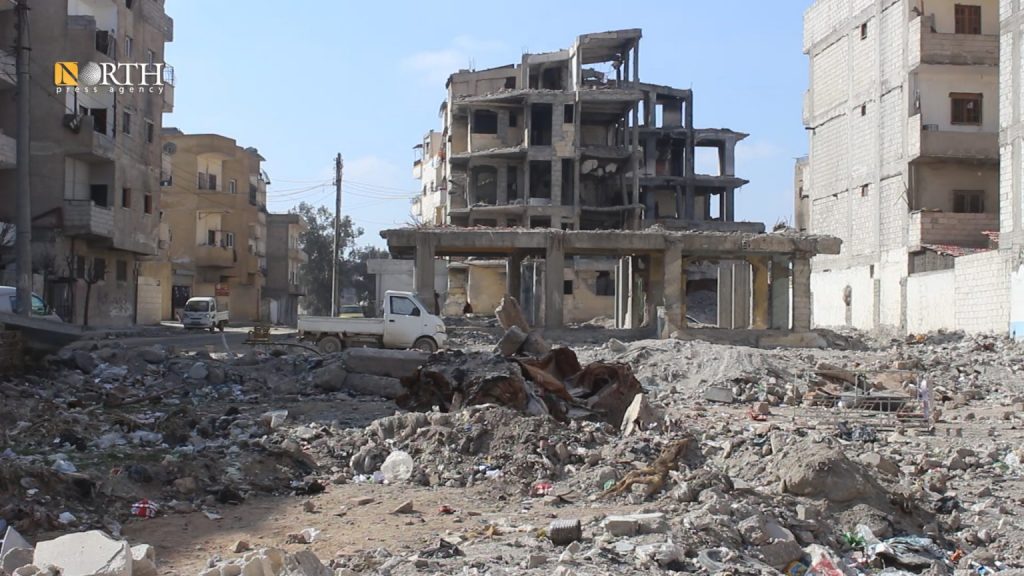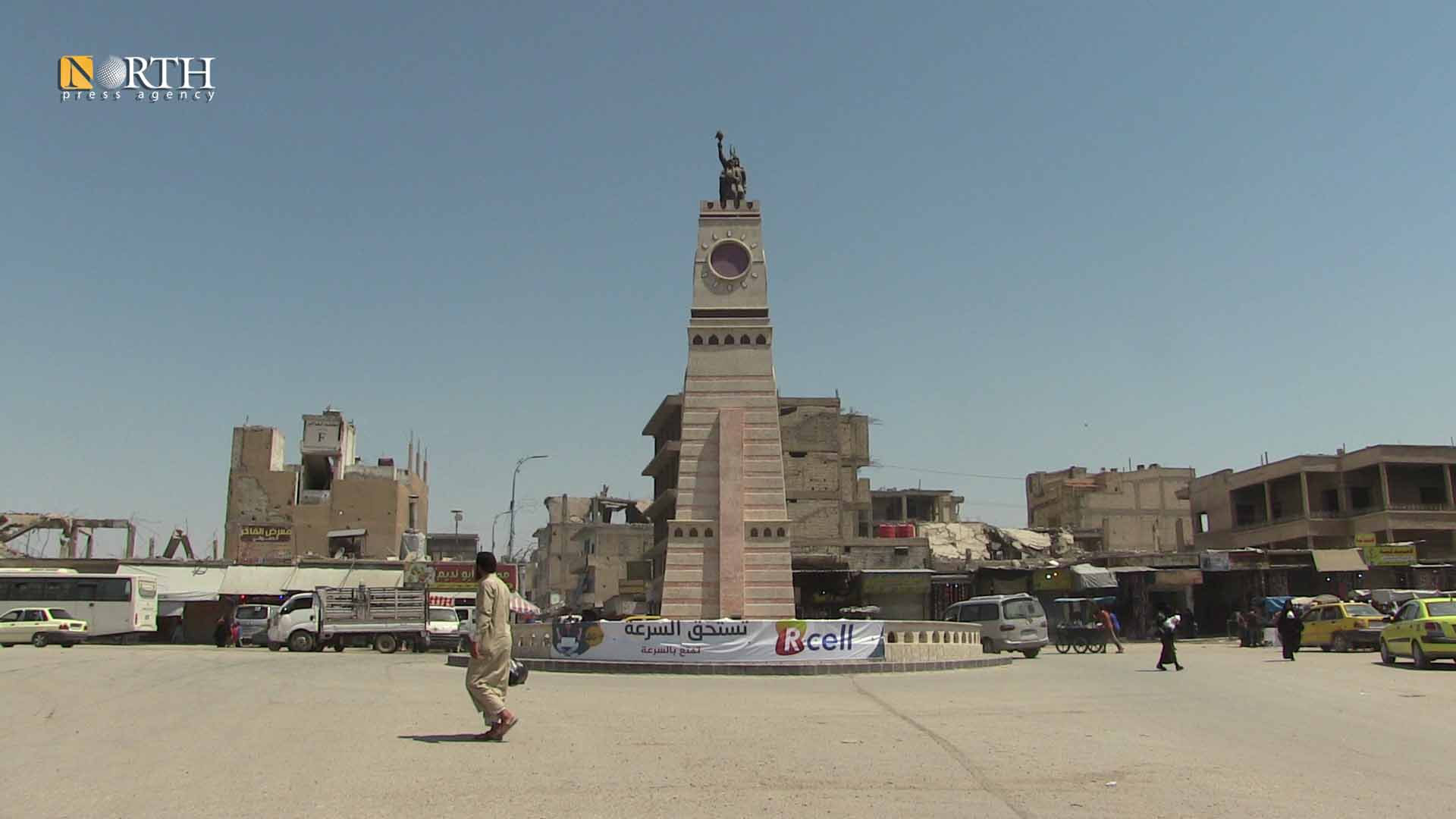On 4th anniversary, Syria’s Raqqa residents recall their release from ISIS
RAQQA, Syria (North Press) – Despite the passage of four years since the liberation of Raqqa in northern Syria from the control of the Islamic State (ISIS), which was taken as the capital of its alleged caliphate, which declared in Syrian and Iraqi regions, residents still remember the details of the first moments of their entry into the city, in addition to the days of battles in its neighborhoods.
On October 17, 2017, the Syrian Democratic Forces (SDF) announced the elimination of ISIS in Raqqa, northern Syria, after battles lasted for 166 days in the city’s neighborhoods and alleys.
Nadim al-Hassan, a resident of the city of Raqqa, recounts the moment he entered the city, and the tragic scene that stunned him at the time.
Destroyed buildings and empty streets closed with rubble and barricades, which were overcrowded with people before ISIS, a memorable scene, even after four years of salvation that al-Hassan cannot forget.
Al-Hassan told North Press that he did not expect life to return to the city after what he saw in its streets, which he described as dark even during daylight hours because the city was empty of its residents even after the first days of the liberation announcement.
Existential threat
At that time, the presence of thousands of mines left by ISIS posed a threat to civilians returning or wishing to return to their homes.
The number of people, who died as a result of mine explosions after SDF took control of Raqqa, from the beginning of 2018 until the beginning of 2020, reached 237 victims, including men, women and children.
While ten members of the Internal Security Forces (Asayish) lost lives in mine explosions in addition to six injuries, according to a previous statement by an expert in mine engineering in Raqqa.
Saleh Youssef, a resident of al-Der’iyah neighborhood in Raqqa city, holds ISIS militants responsible for the killing of two of his sons due to the mines they left behind in his house located on the outskirts of the western city of Raqqa.
Youssef told North Press that his two sons entered their house at the end of 2017 to inspect it, and make sure that it is safe for the entry of their families.
“The mine was prepared to detonate when the door opened, and as soon as the two young men opened the door, it exploded, causing their death,” he said.

Youssef considered that “what happened to the city during the period of ISIS and then in the battles to liberate it will remain imprinted in the memory of its sons, no matter how long they live, because it was written with their blood and the blood of their beloved ones,”
Today, the public gathering and meetings do not pass without talking about the two phases of displacement and liberation, and the pain or fear that most of the city’s residents experienced during that period of time, according to Youssef.
After liberation
After the liberation, the residents of Raqqa began the first stages of rebuilding.
The municipality’s services department of the Raqqa Civil Council began operations of removing rubble from roads and sub-streets in the city.
The Raqqa Civil Council was established several months before the city was liberated in the town of Ain Issa, 35 km north of Raqqa.
Today, scenes of destruction have not completely disappeared from Raqqa, as some of its neighborhood buildings still witness the harsh conditions that the city has undergone, and there are houses that are still in their condition without repair or restoration.
Multiple obstacles
Ahmad Khalil, the deputy co-chair of Raqqa Civil Council, said that the most prominent obstacles facing the reconstruction stages in Raqqa are primarily related to political and security reasons.
He pointed out that the most prominent threat to all areas of northeastern Syria, not just Raqqa, is the continuous Turkish threats to the region and the accompanying undermining of stability opportunities that the Autonomous Administration was able to achieve.

